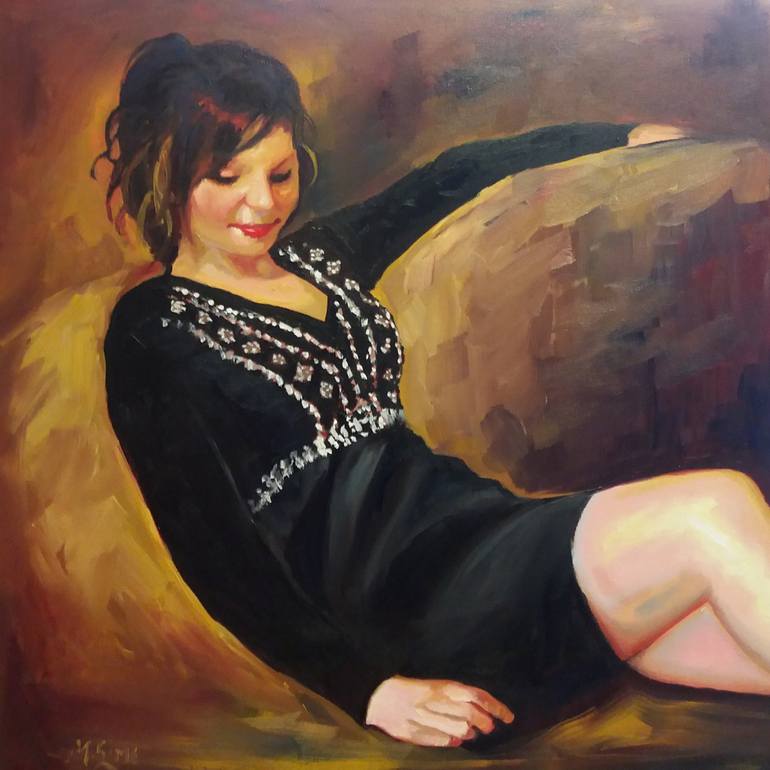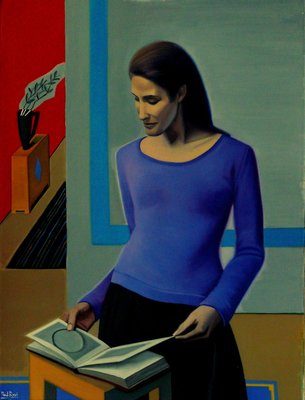The Evolution of Metaphorical Oil Paint: Comprehending Its Historical Significance and Modern Interpretations
The evolution of metaphorical oil paint works as a compelling lens where to check out the interaction between artistic expression and historic context. From the careful naturalism of the Renaissance to the emotive power of the Baroque, each era has actually contributed layers of meaning and strategy to this ageless medium. Contemporary musicians, attracting from this rich heritage, are currently reinterpreting the human figure in ways that test standard narratives. As we explore these makeovers, one have to think about how the discussion in between existing and past informs not just creative technique however additionally social reflections in an increasingly intricate world.
Beginnings of Figurative Oil Paint
The beginnings of metaphorical oil painting can be traced back to the early Renaissance in Europe, specifically in the 15th century. The development of oil paint enabled for greater depth of shade and detail, improving the realism and vibrancy of their work.

In this transformative period, numbers were usually depicted within contextually rich atmospheres, showcasing not only their physical characteristics however likewise their mental states. Leaders such as Jan van Eyck and Titian used the medium's versatility, utilizing layering techniques to achieve luminance and appearance. This advancement promoted the representation of elaborate fabrics and the subtleties of complexion, adding to the development of portraiture and narrative scenes.
Additionally, the Renaissance emphasis on humanism cultivated a recognition for individualism, which subsequently influenced musicians to develop more vibrant and relatable numbers - figurative oil painting. As an outcome, figurative oil painting arised as an effective car for narration and psychological engagement, preparing for future creative movements and designs
Key Historic Movements
Substantial historical activities have formed the evolution of metaphorical oil painting, each contributing unique approaches and techniques that broadened the medium's possibilities. The Renaissance noted a turning point, highlighting realistic look and the human form, with musicians like Leonardo da Vinci and Michelangelo pressing the limits of physiological accuracy and viewpoint. Following this, the Baroque era brought significant contrasts of light and shadow, exemplified by Caravaggio, that infused spiritual themes with intense emotionality.
The 19th century presented Romanticism and Realistic look, where artists such as Delacroix and Courbet tested classic ideals, concentrating on specific expression and everyday life. The introduction of Impressionism better transformed the medium by stressing the effects of light and color, causing a separation from traditional representation.
In the very early 20th century, activities like Expressionism and Cubism redefined metaphorical painting through abstraction and the exploration of psychological deepness. Each of these activities not only reflected the societal modifications of their times yet also prepared for contemporary interpretations. The interaction in between these historic activities has actually created a rich tapestry of styles and viewpoints, affecting modern-day musicians in their search of recording the human experience on canvas.
Techniques and Materials Evolution

Throughout the Baroque period, strategies such as chiaroscuro and sfumato arised, enhancing the psychological resonance of figurative structures. Artists started to explore glazes and impasto, adjusting texture and luminance. By the 19th century, technologies like making use of pre-mixed paints in tubes revolutionized access, allowing artists to repaint en plein air and catch the short lived results of light.
The 20th century experienced the introduction of artificial pigments and tools, which broadened the scheme and altered the uniformity of oil paints. In addition, the exploration of new application techniques, such as combination knives and brushes of differing rigidity, further diversified artistic expression. Jointly, these improvements show the advancing partnership in between materials, methods, and the creative vision fundamental in metaphorical oil paint.

Contemporary Analyses
Contemporary interpretations of figurative oil paint mirror a vibrant discussion in between practice and technology, where musicians challenge established standards and explore varied themes. This advancement shows up in various methods, as modern musicians mix classic techniques with contemporary concepts, typically addressing social, political, and individual narratives.
Lots of professionals draw inspiration why not check here from historical works, yet they instill their pieces with contemporary point of views, utilizing the human form as a lorry for commentary on society, sex, and identification. Artists progressively try out abstraction, distortion, and combined media, which permits a broader interpretation of the number and its context.
In addition, making use of vibrant shade schemes and unique make-ups typically serves to disrupt standard viewing experiences, provoking important engagement from audiences. This shift in emphasis prolongs past appearances; it reflects a growing recognition of the complexities of human experience in an interconnected globe.
As metaphorical oil paint proceeds to develop, it continues to be a vital medium for exploring the subtleties of contemporary life, personifying both a regard for heritage and a dedication to dynamic thought. The result is an abundant tapestry of expression that reverberates with the complexities of the modern human condition.
Effect On Modern Art
The effect of figurative oil paint on modern art is profound, as it has constantly motivated a myriad of artistic motions and techniques throughout the 20th and 21st centuries. From Expressionism to Surrealism and beyond, the expedition of the human figure has remained a central theme, enabling artists to communicate complex emotions and narratives. This emphasis on metaphorical representation has brought about a re-examination of standard strategies, causing ingenious methods that blend realistic look with abstraction.
Moreover, contemporary musicians have welcomed figurative oil painting as a means to resolve social and political problems, utilizing the tool to test perceptions of culture, sex, and identity. The revival of passion in metaphorical work in current years mirrors a hoping for connection in an increasingly electronic world, where human experience and feeling are critical.
Additionally, the discussion between figurative oil painting and modern-day art appears in the works of artists such as Kehinde Wiley and Jenny Saville, who attract on historical referrals while infusing their pieces with modern importance. Ultimately, figurative oil painting remains to form and redefine modern-day imaginative expression, underscoring its enduring relevance in the art globe.
Conclusion
The evolution of figurative oil painting highlights its historical relevance and versatility across different creative movements. From the naturalism of the Renaissance to the emotive expressions of the Baroque and the ingenious strategies of modernity, this medium has actually constantly changed. Contemporary analyses reflect unusual compositions and vivid shades, cultivating critical interaction with political and social motifs. Inevitably, figurative oil paint remains an important medium for discovering the human experience, reverberating profoundly in today's electronic landscape.
The development of figurative oil painting offers as an engaging lens through which to analyze the interplay between imaginative expression and historical context.Significant historic visit homepage movements have actually shaped the development of figurative oil painting, each adding one-of-a-kind approaches and techniques that increased the tool's opportunities.As historical activities shaped the trajectory of metaphorical oil painting, the products and techniques used by musicians have actually additionally undertaken significant makeovers. figurative oil painting.The effect of Related Site metaphorical oil painting on contemporary art is profound, as it has actually continually influenced a myriad of imaginative movements and methods throughout the 21st and 20th centuries.The evolution of figurative oil paint emphasizes its historical relevance and versatility across different creative activities